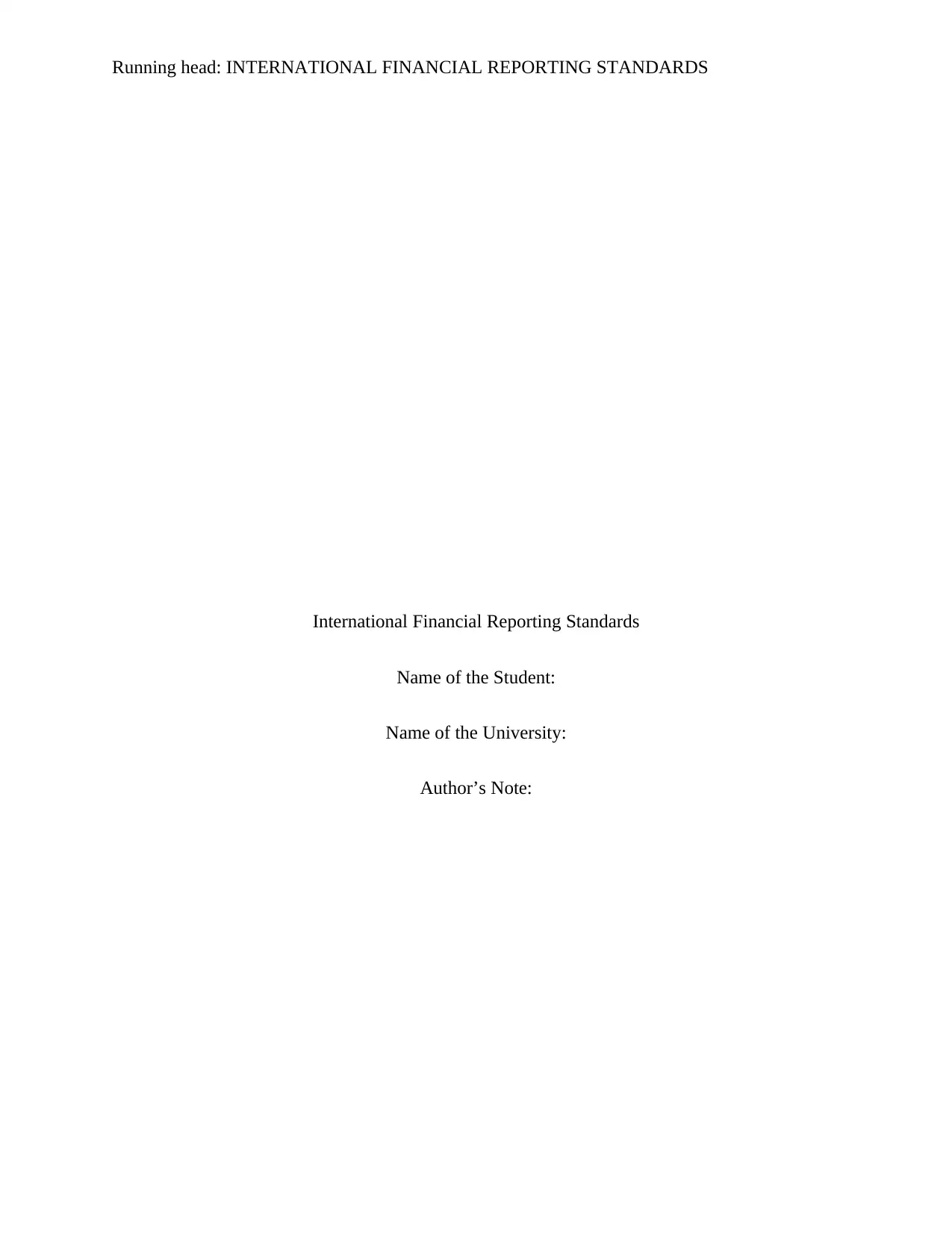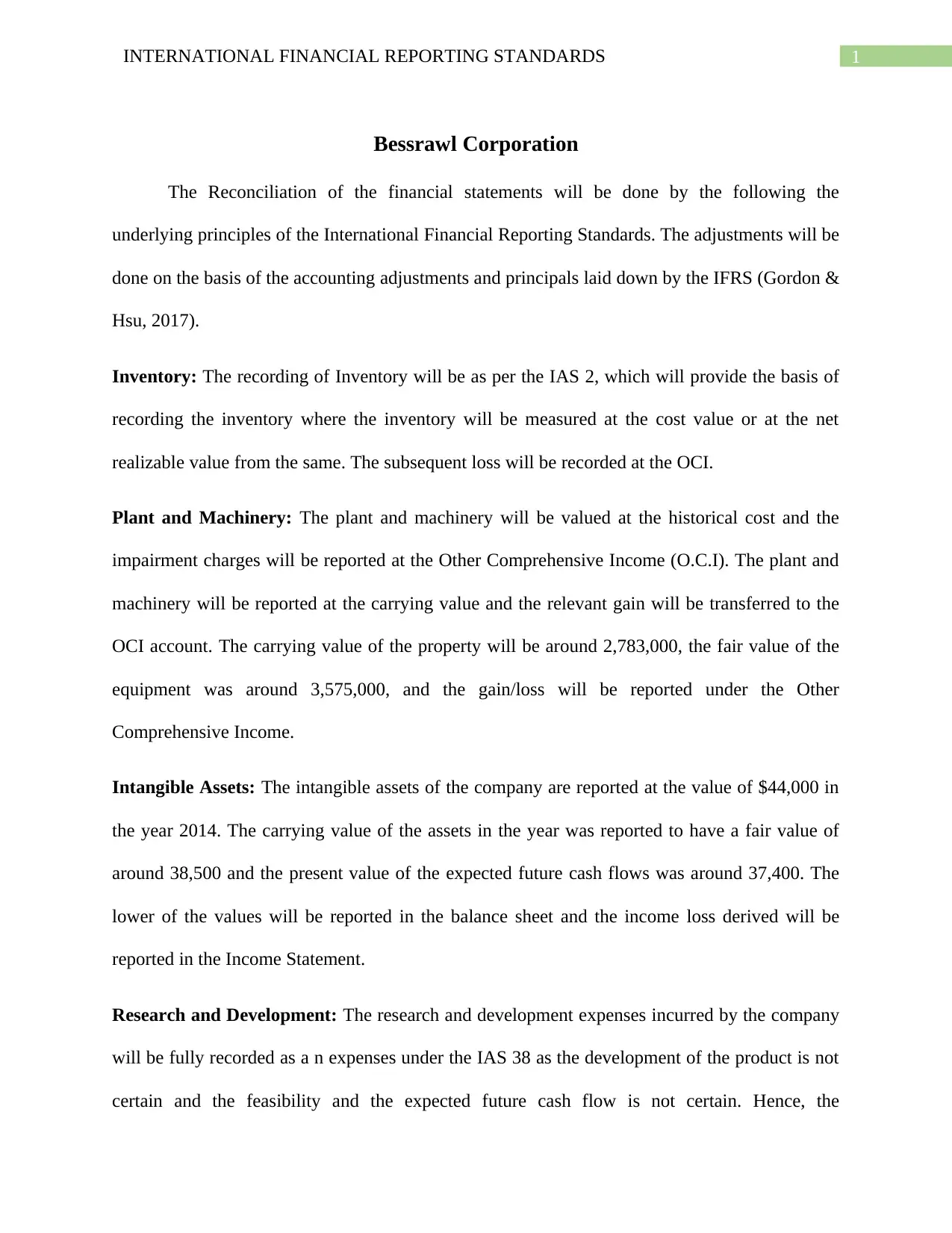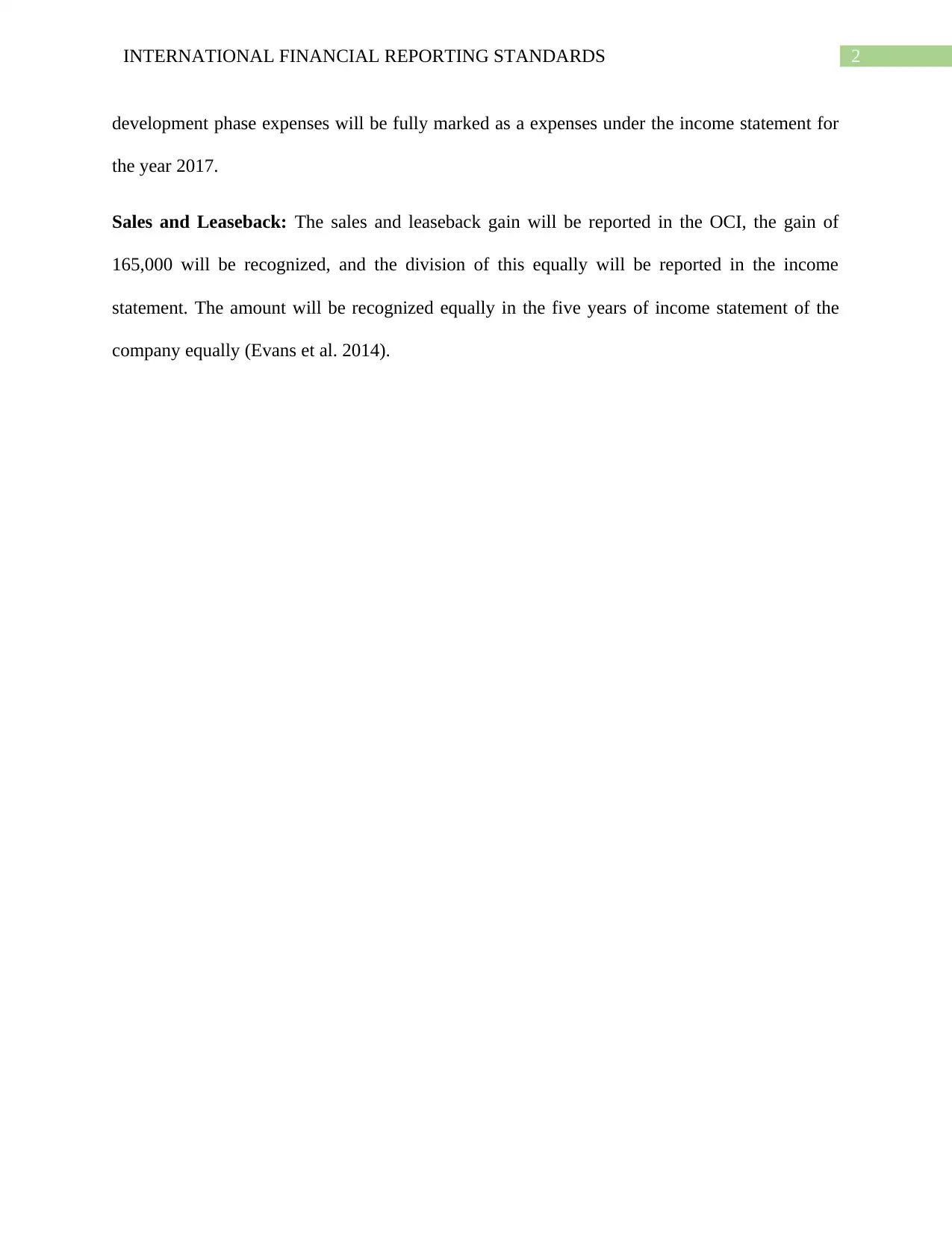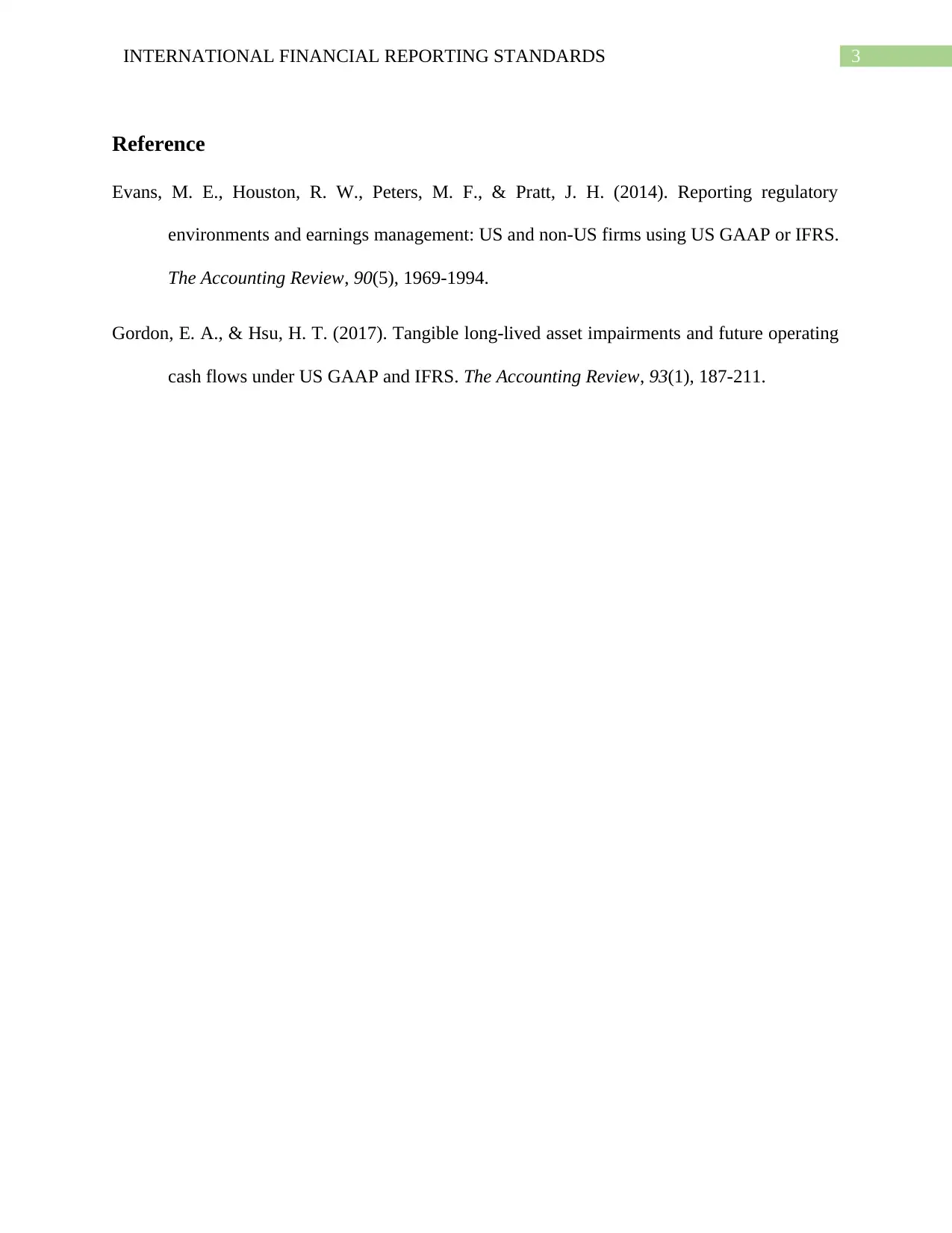Bessrawl Corporation: Analyzing IFRS Impact on Financial Statements
VerifiedAdded on 2023/05/28
|4
|537
|476
Case Study
AI Summary
This case study analyzes the financial statements of Bessrawl Corporation, a US-based company currently using US GAAP, and assesses the impact of adopting International Financial Reporting Standards (IFRS). The study focuses on reconciling the company's income and stockholders' equity by examining five key areas where US GAAP and IFRS differ: inventory valuation (IAS 2), property, plant, and equipment (historical cost and impairment), intangible assets (carrying value, fair value and expected future cash flows), research and development costs (expensing development phase), and sales-and-leaseback transactions. The assignment provides specific financial data for each area, including inventory costs, building values, and asset valuations, to facilitate the reconciliation process. The analysis involves determining the appropriate accounting treatments under IFRS, calculating the necessary adjustments to the financial statements, and understanding how these adjustments impact the reported income and equity. The solution references relevant IFRS standards and provides a detailed explanation of each adjustment, including the impact on the income statement and balance sheet, ensuring a comprehensive understanding of the financial implications of the switch to IFRS for Bessrawl Corporation. The case study is designed to provide practical application of IFRS principles and enhance understanding of the differences between US GAAP and IFRS.
1 out of 4











![[object Object]](/_next/static/media/star-bottom.7253800d.svg)